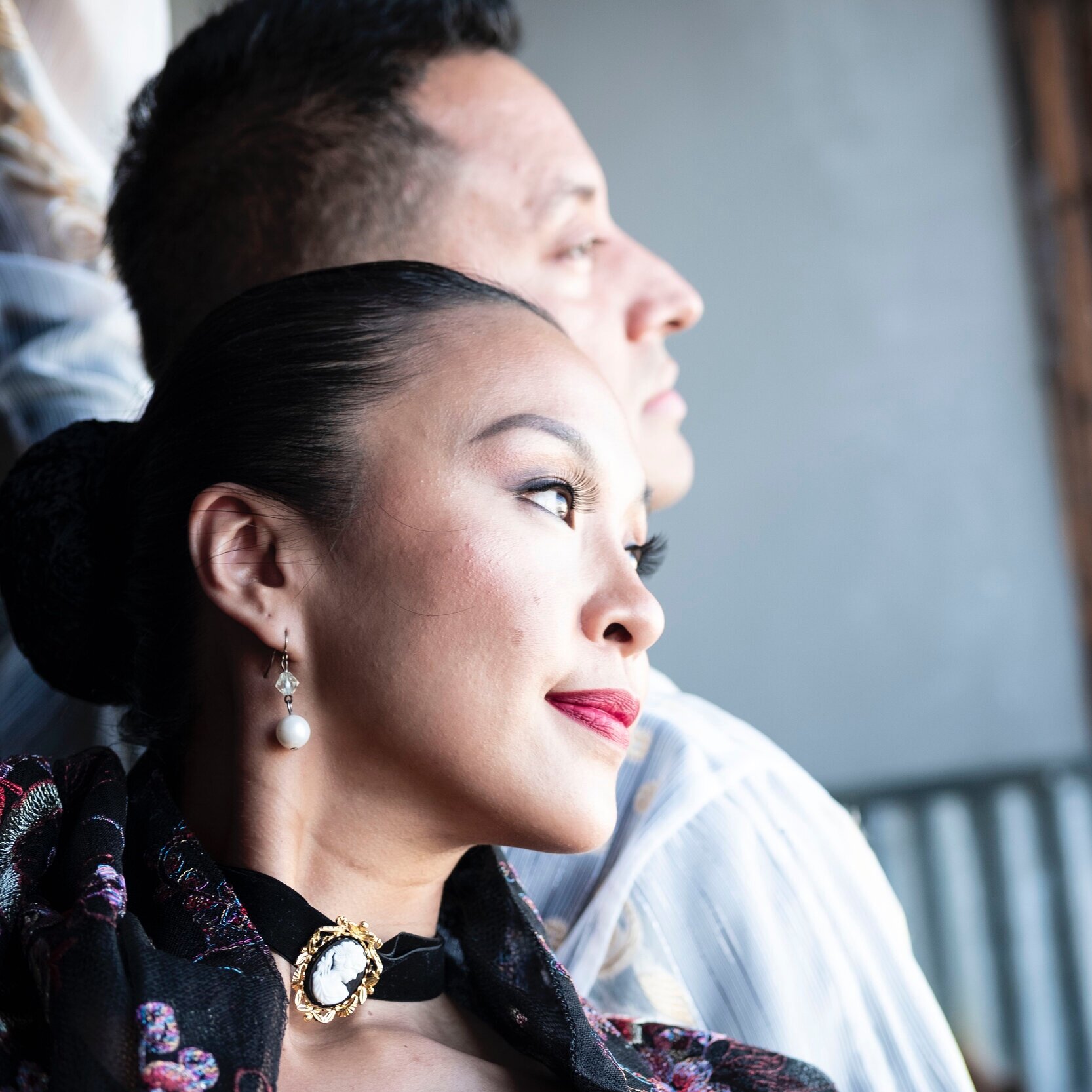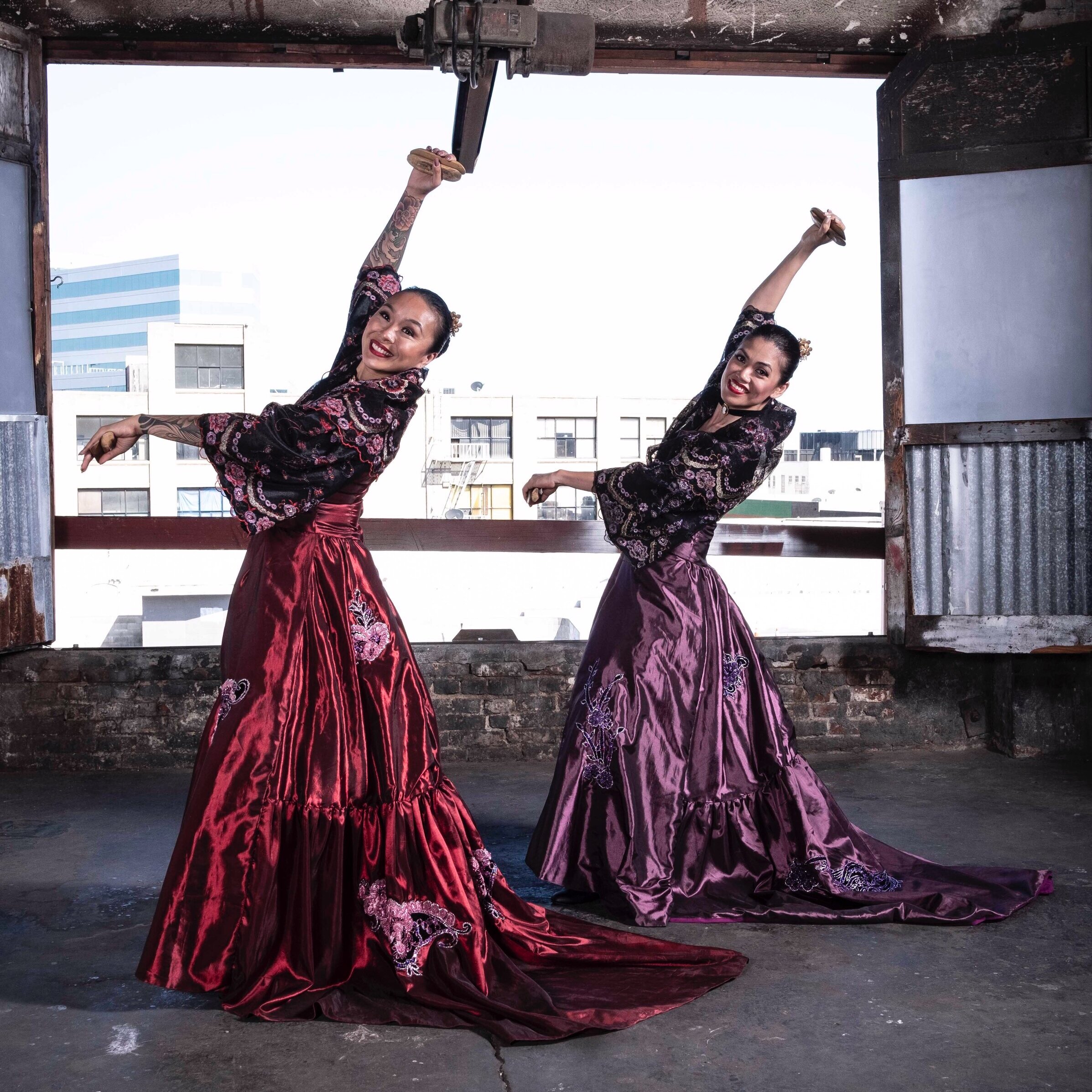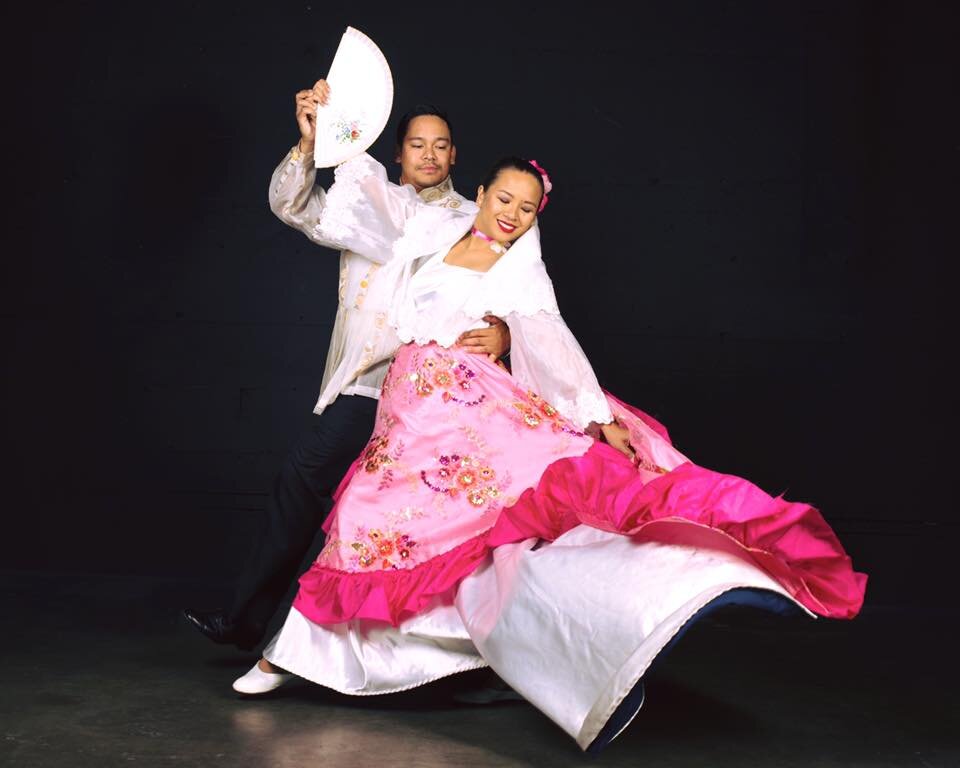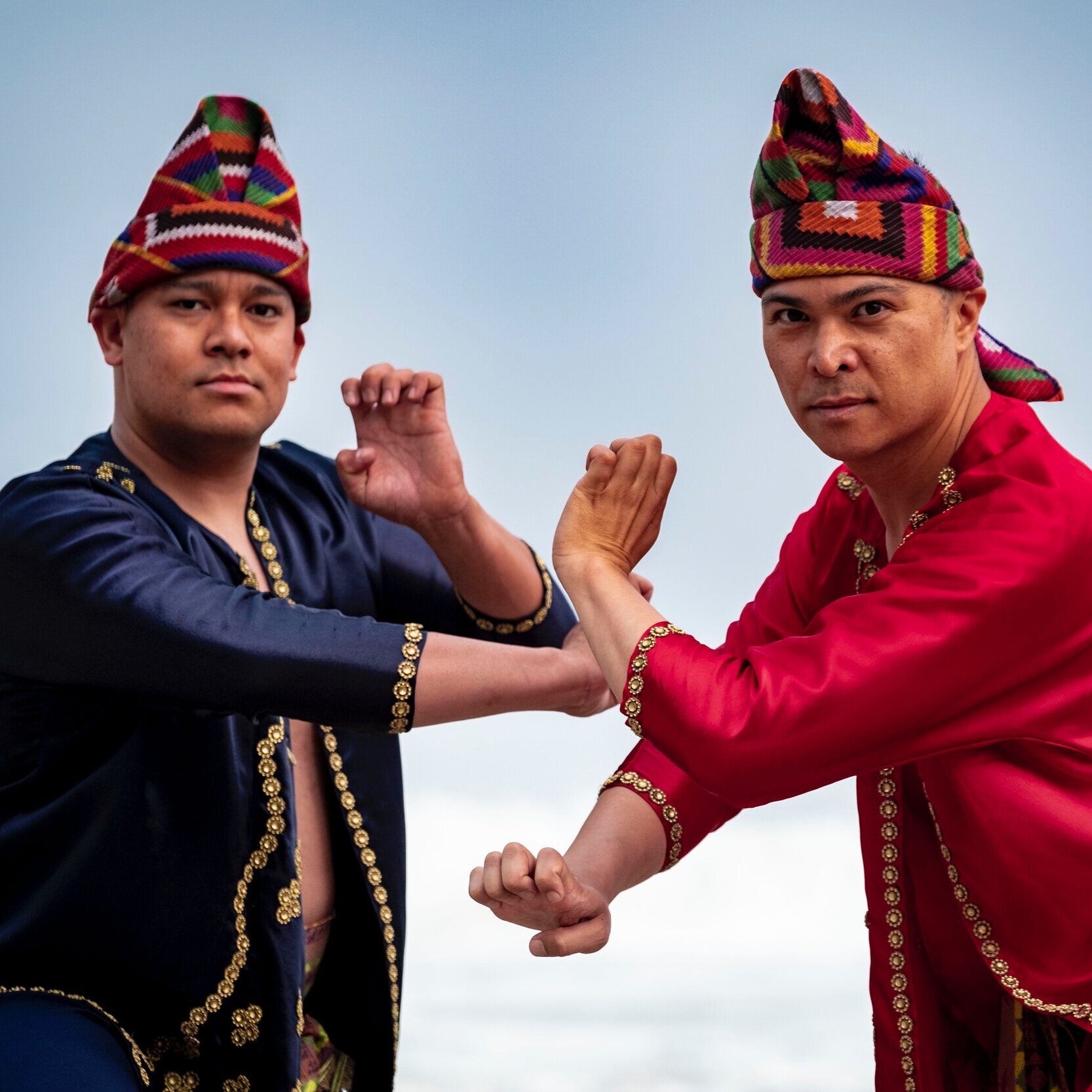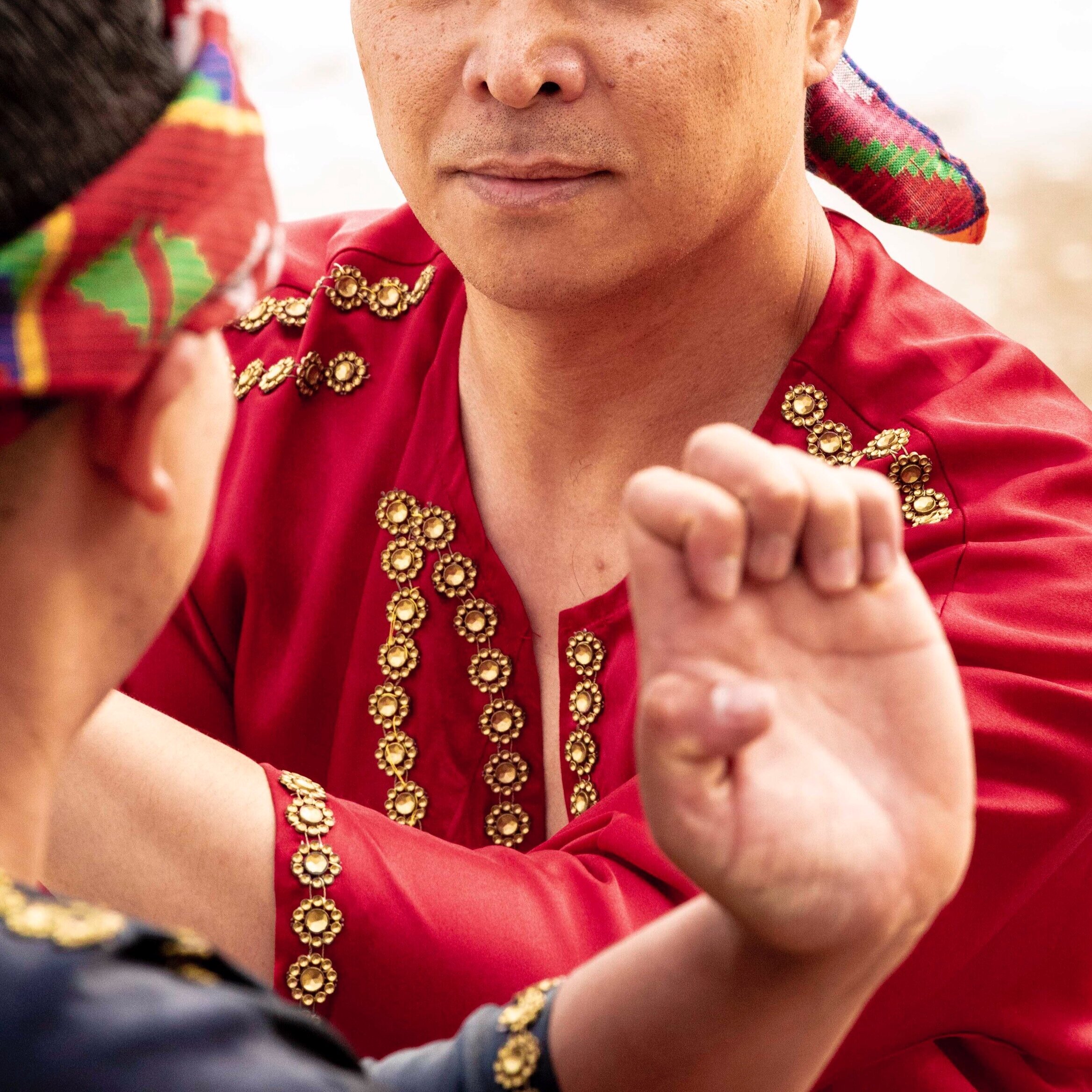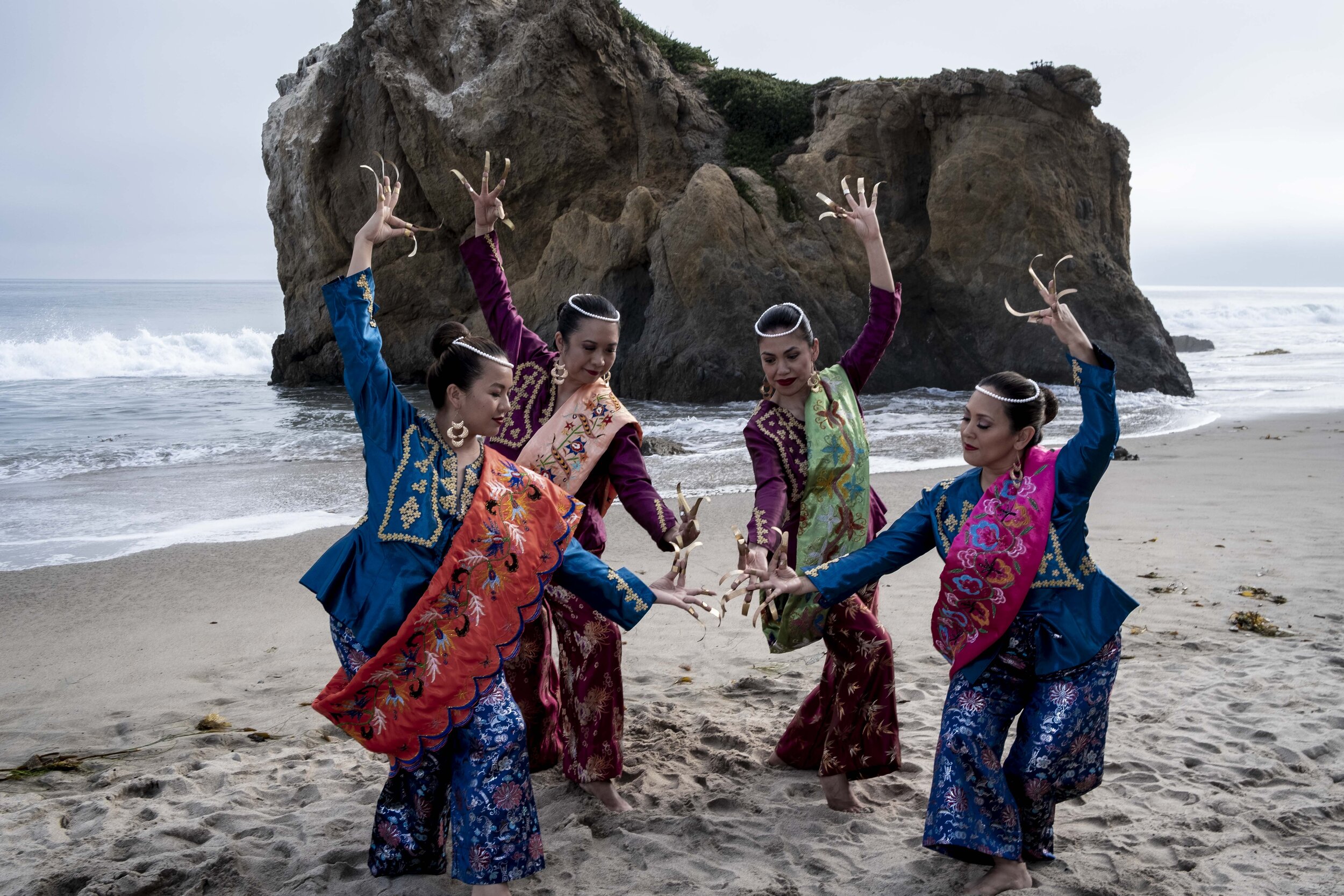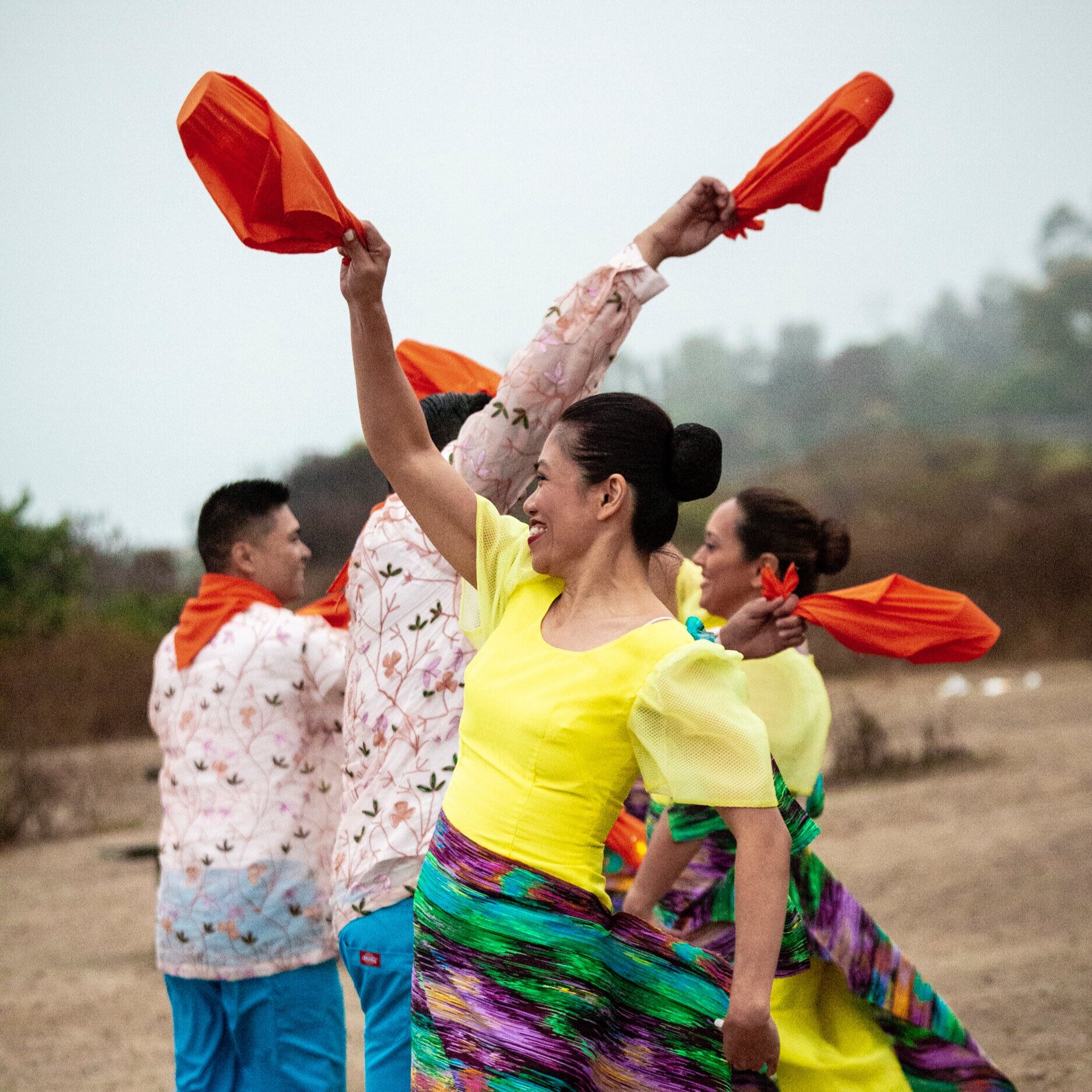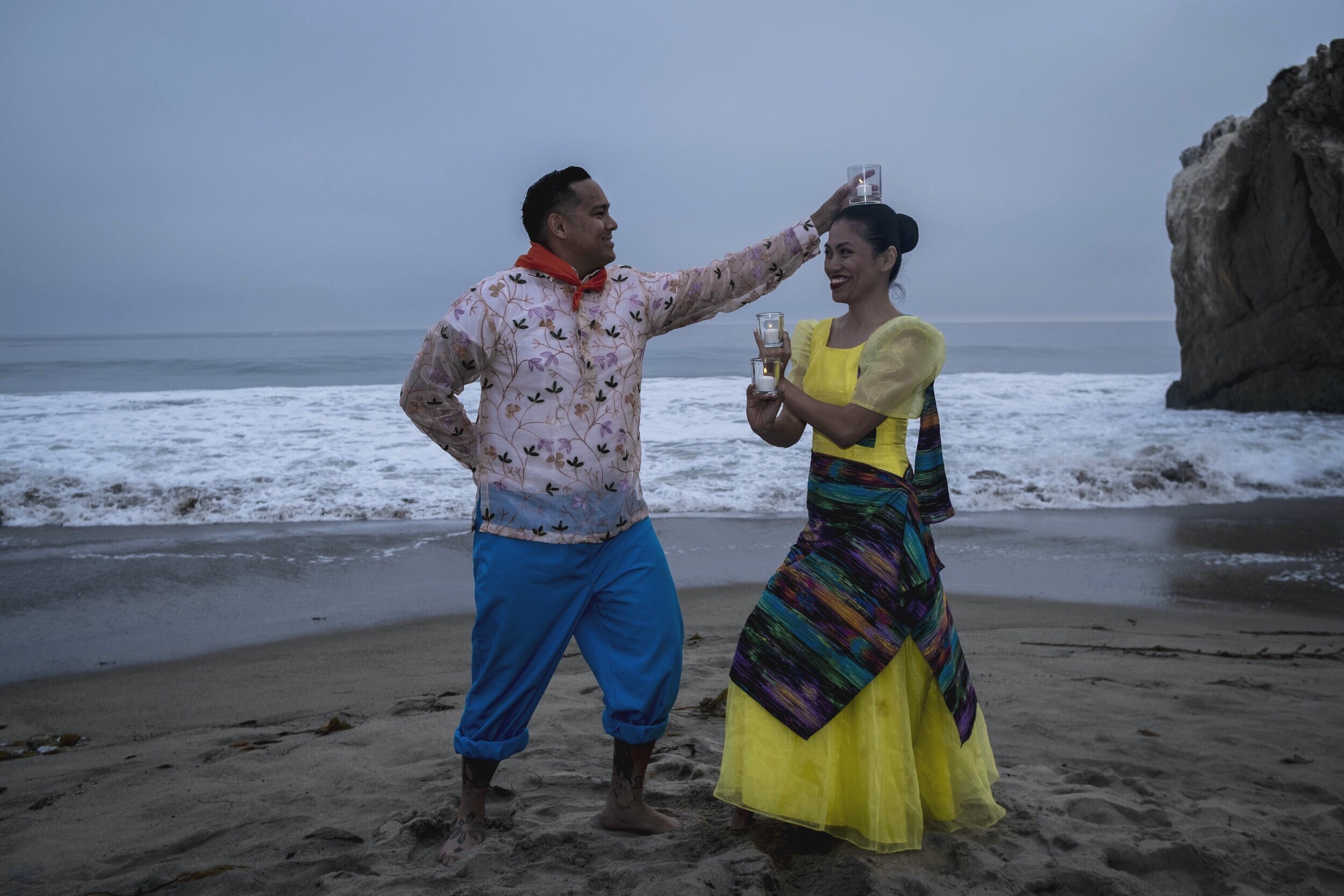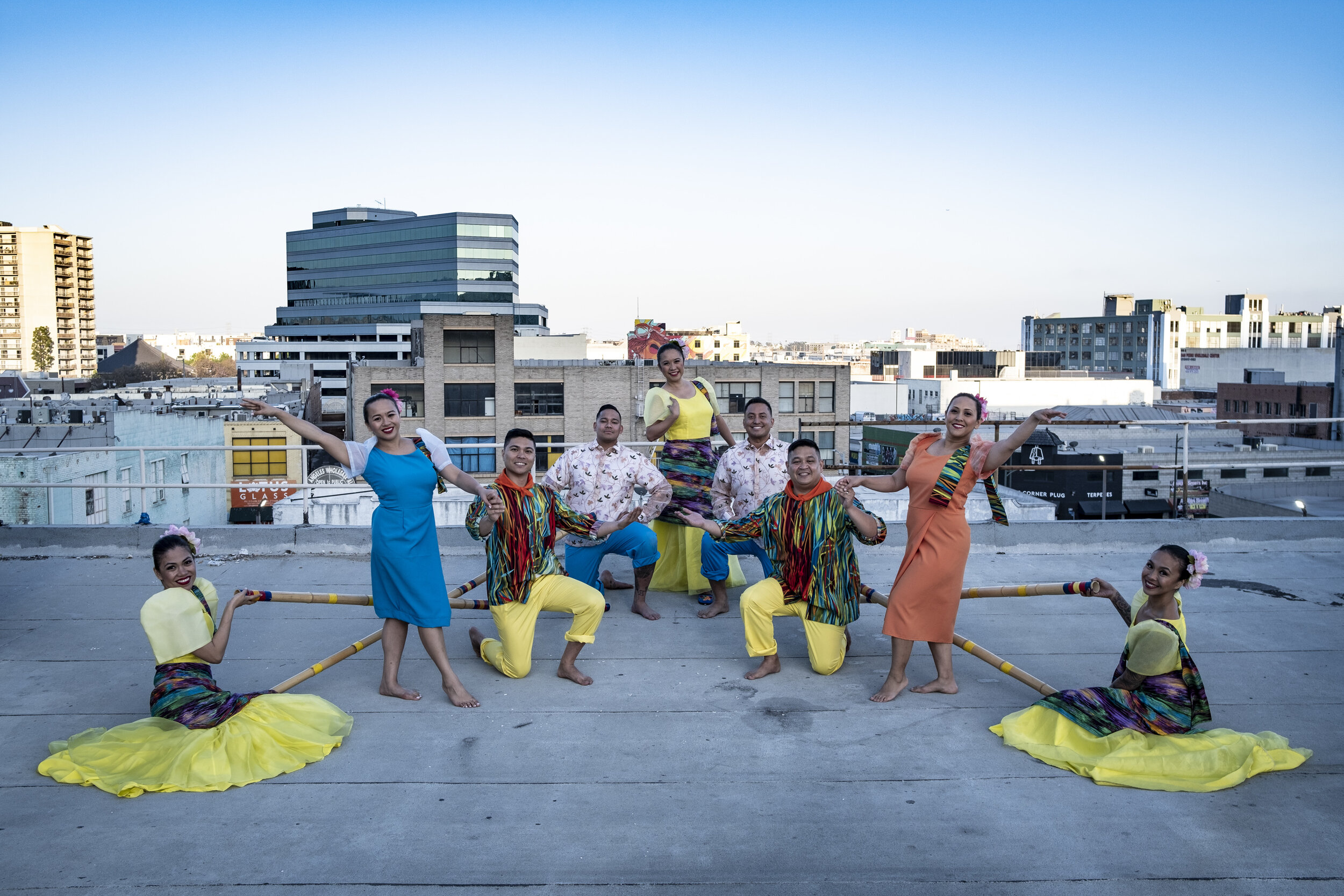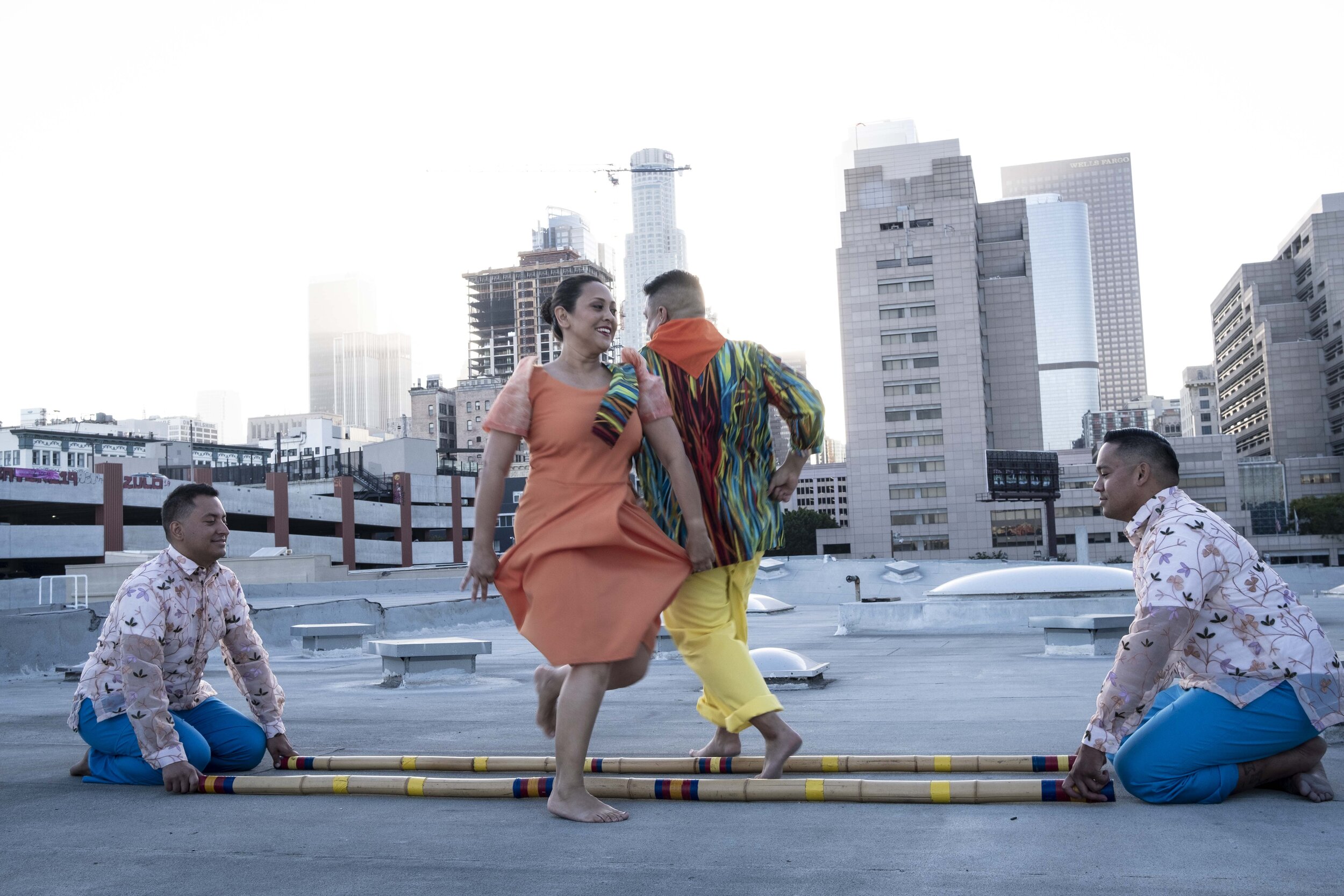“The level of dance technique is very strong and well prepared, stage presence was focused and clear- By the end of the evening I felt I saw the company transform into many many different characters, cultures, historic time zones, and movement styles. ”
La Jota Manilena
The Philippine Jota, adapted from the original Spanish folk dance, evolved into a formal ballroom dance. This Jota named for the capital city Manila, complete with bamboo castanets, celebrates the Filipinos’ successful revolt for independence from Spain.
Paso Doble
The upbeat Paso Doble rhythm came by way of Europe and quickly gained popularity among Filipinos who added their own twist of joyful melodies and sprightly steps. Filipinos composed their own Paso Doble music that was played as entertainment to guests in ballrooms or to passengers on board ships. This version depicts suitors flirting with a dalaga (young lady) who eventually chooses among the gentlemen.
Burong Talo
Burong Talo depicts a fight between two wildcats and demonstrates the Sama and Tausug people’s martial art of Langka. There are many martial dances like Burong Talo that were created to remember the stances of the Langka Martial Art.
Linggisan
Linggisan are local seagulls that are a common sight for the Sama, Bajao, and Tausug people that live on islands in the Sulu Archipelago. The fondness for this bird has brought forth a song and dance that mimics its movements. The dance uses the pangalay, an ancient form of dance from southern Philippines with a rich movement vocabulary characterized by languid arm movements, deep knee bends, fluid hand gestures, and sculptural poses.
Pandanggo Sa Ilaw/Wasiwas
Two dances have been combined because of their common use of the tinghoy (lantern), one from Mindoro and the other from Pangasinan respectively. The dances’ skillful challenge is apparent but the folk tale behind the dance is even more fun. Fishermen would arrive from dawn’s catch needing a way to see the shore. The villagers would dance with the lanterns and swing them to signal home for the fishermen.
Tinikling
Tinikling is named after the tikling bird as it escapes the traps set by farmers in the rice fields. The Tinikling is a favorite for its challenge of speed and precision. It is the most popular of bamboo dances worldwide and of Philippine folk dances. Tinikling comes from Leyte and shows the innovativeness and playfulness of Filipinos.


